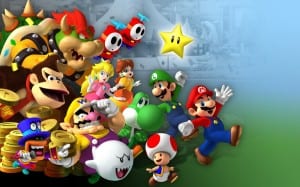Peculiarities of Game Localization
Have you ever wondered why some foreign computer games are unpopular in your country, and others are hugely popular – and have even built up a cult following – so much so that people prefer playing the game to living their real life? Of course, some games are destined to be ‘international stars’ because of their high-quality content and graphic design. However this is often not enough: computer games also need to cross cultural boundaries and attract multiple target audiences like many books, films, TV shows, and websites do.
Digital games are a global, multi-billion dollar industry, and many game producers and art directors, who are perfectly confident in local game releases, worry about foreign editions in non-native languages as it can influence the overall success of the product. For the game to achieve as much success abroad as it has achieved in the country of release, companies must employ localization, which is a complex process.
Video game localization includes translation of text within the game (eg. characters’ dialogue, on-screen instructions, etc.), the game’s instruction manual, packaging, and promotional material. In addition, dialogue needs to be culturally adapted and voiced by native speakers of the target market in order to come across as authentic.
However, many aspects of video game localization begin long before translation is actually needed. First, localizers need to decide where the game will be sold, and which languages it will be translated into. For example, localization might include a game developer’s decision not to invest in a Japanese localization as he or she can predict that the company will not benefit from sales in that particular area.
The process of localizing a digital game can be divided into three categories in regard with complexity of localization and its cost:
- Basic localization deals only with the text itself and keeps original icons and graphical user interface (GUI) elements;
- Complex localization changes icons and GUI along with the text;
- Blending is a case when the storyline of the game is rewritten, and the graphics are recreated to match the requirements of the target culture.
Blending is the most expensive and complex type of game localization, and prior to localizing, game developers need to research users and decide whether or not their storyline will be of interest to any culture, or if it is better to recreate the story and characters to appeal to their specific cultural demographic.
Although many companies are not ready to invest in blending due to budget constraints, they often do invest in basic or complex localization of their digital games to some degree. To accomplish this, companies require highly professional and technical language specialists that are aware of the requirements and taboos of the target culture.
At LingoStar, we co-operate with professional digital game translators all over the world who know every aspect of the culture they are working with and can provide flawless translation and localization services in over 100 languages. For more information, call us today at 604-629-8420 or send us an email at info@lingo-star.com

















